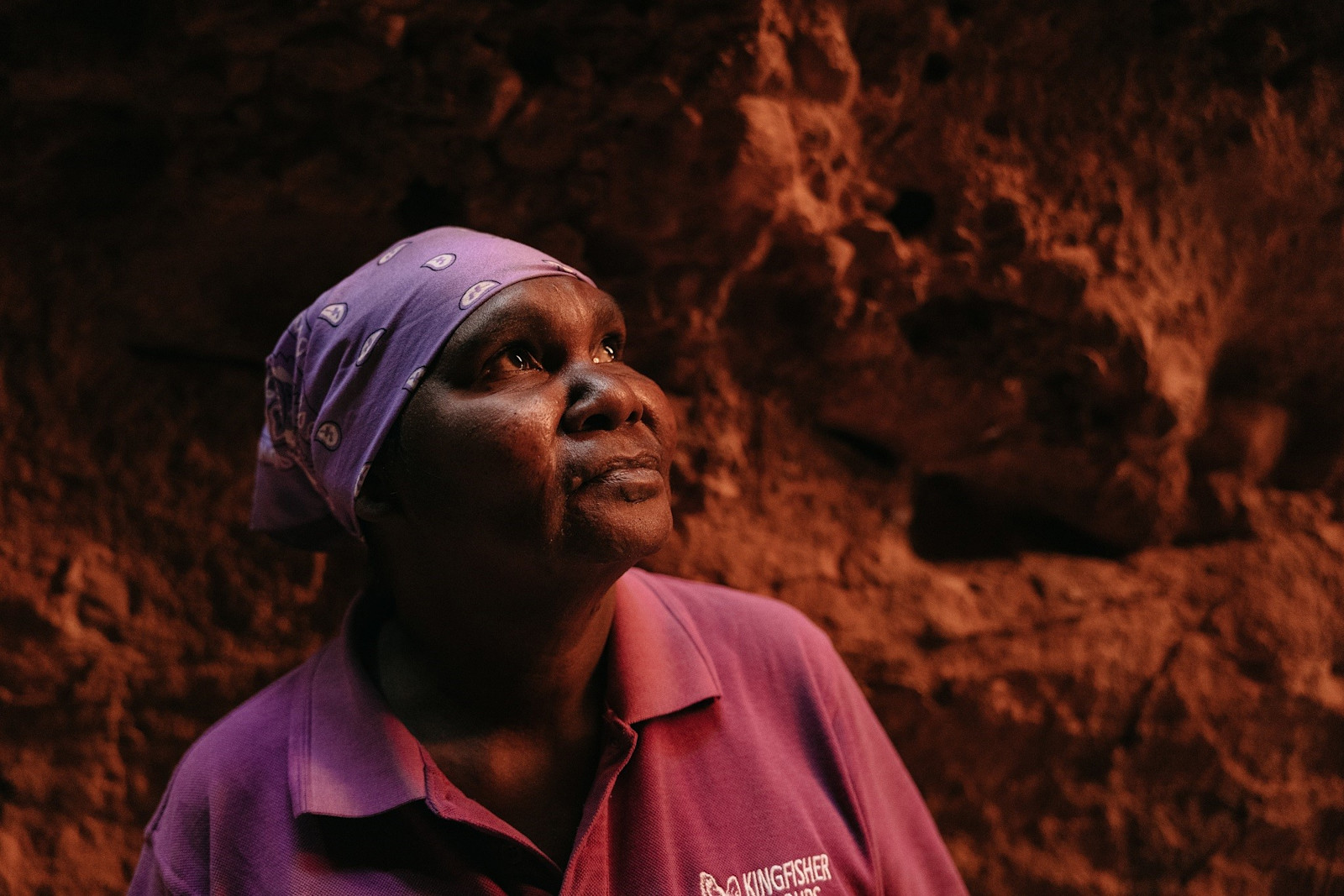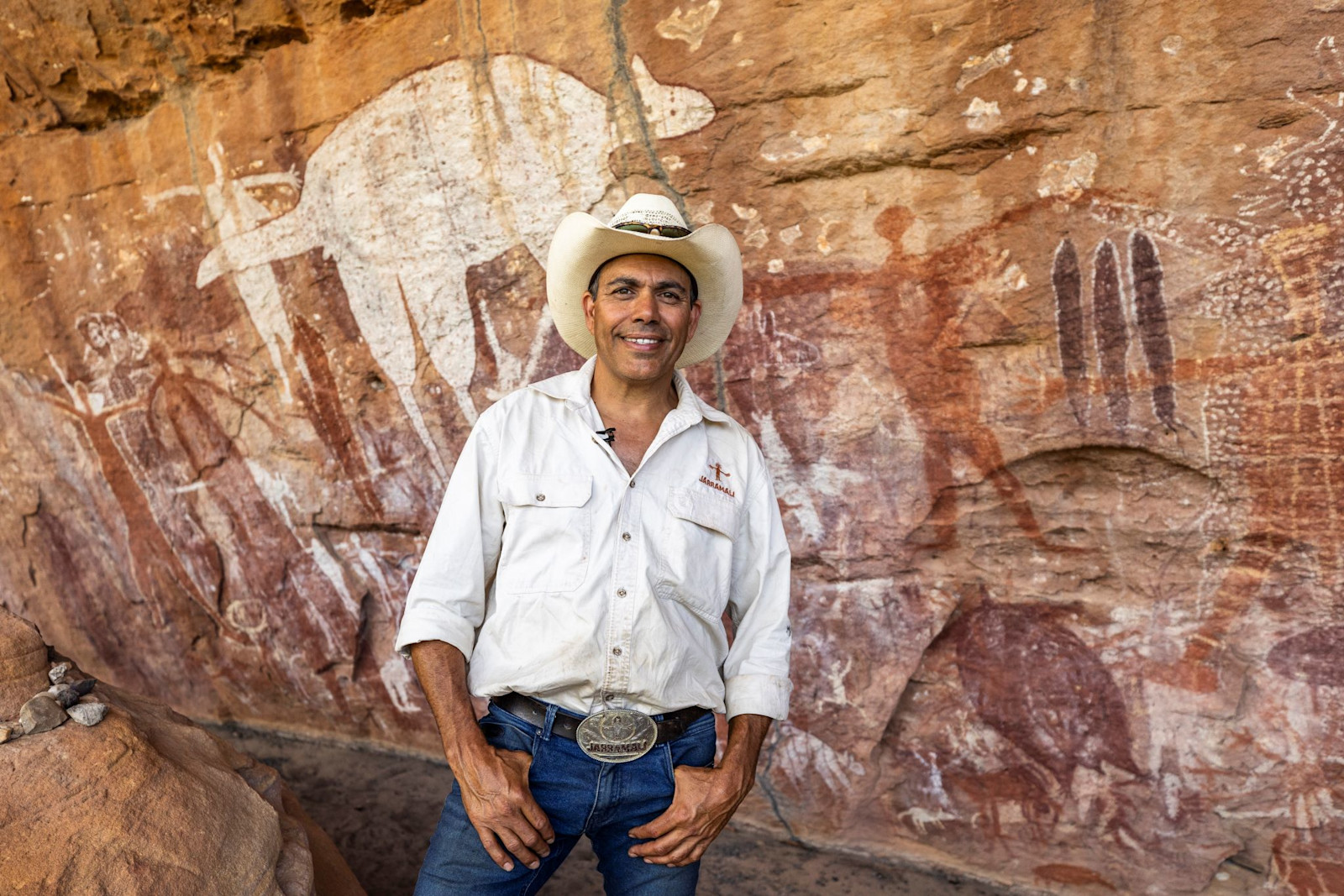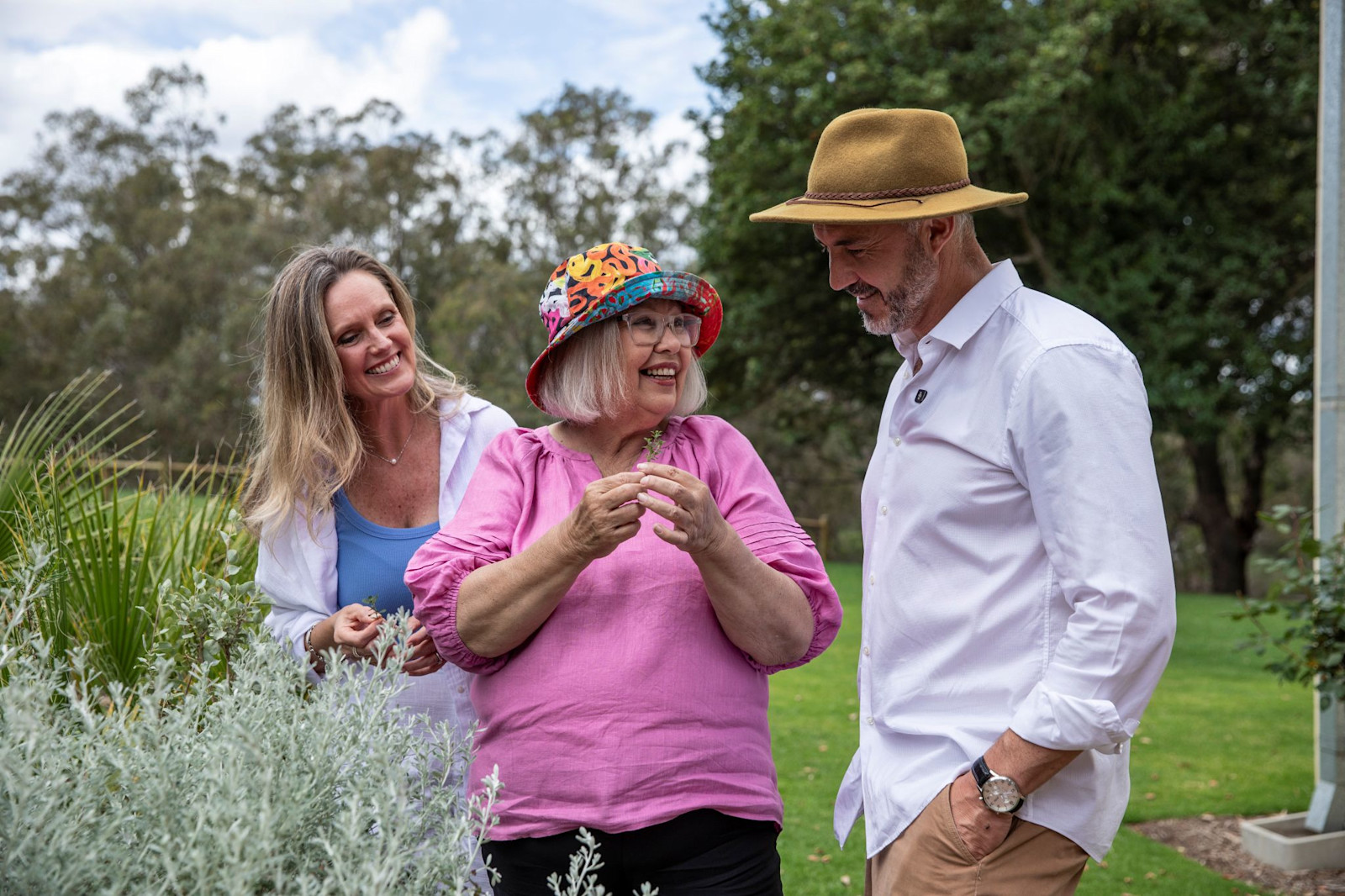In the footsteps of the palawa on Tasmania/lutruwita's wukalina Walk
Tasmania’s/lutruwita’s Indigenous-owned tourism offering, wukalina Walk takes trekkers around a postcard-perfect patch of the state’s northeast. And if you needed extra incentive to try the experience, it has just been listed on TIME’s World’s Greatest Places List for 2024. Here’s what to expect.

wukalina Walk, Tasmania © wukalina Walk
We’re two hours into our four-day trek, and I’m already quietly confident I’m finally going to see a Tasmanian devil in the wild. Almost every step I take there’s evidence of the endangered marsupial’s presence, whether it’s fresh scat or their distinctive boxy paw prints, left behind along the sandy trail. Our guide, Carleeta Thomas, is less optimistic, but she humours me before turning her attention to a more pressing wildlife encounter: in our path, curled up at the base of an enormous Xanthorrhoea (grass tree), is a slumbering tiger snake, making the most of the blinging sunshine on this unusually warm autumn day.
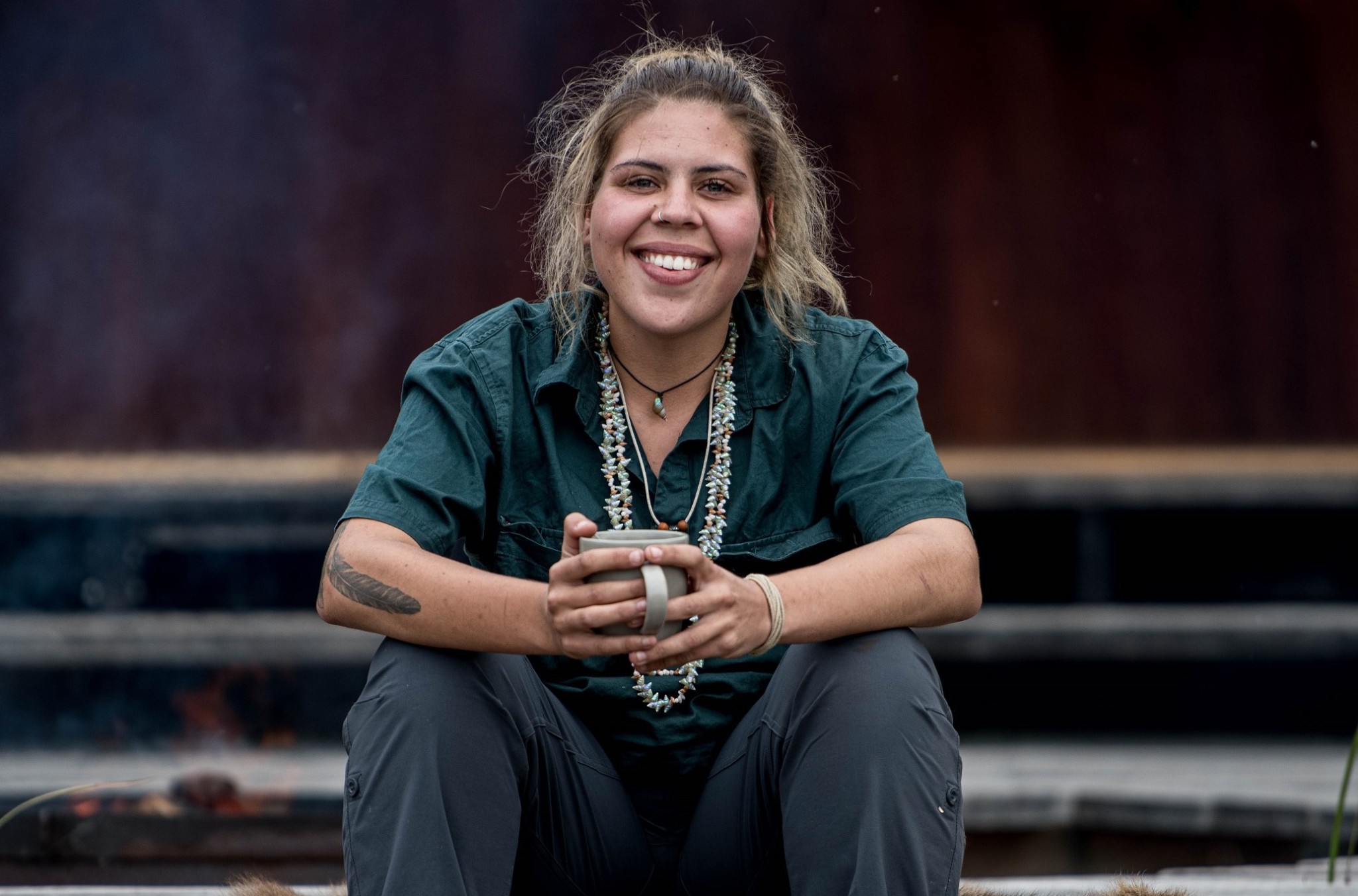
Carleeta Thomas, wukalina Walk, Tasmania/lutruwita © wukalina Walk
Thomas proves she has pluck to spare; she stands resolutely between the reptile and our group – a motley crew of six hikers, accompanied by guides Thomas and Warrick Daniels – calmly waiting for it to unfurl and slither back into the bush. “It’s extremely rare to see a beautiful snake like this,” says Thomas, a proud member of Tasmania’s palawa Indigenous community. “They don’t want to hang around humans. You’re lucky today.”
We’re in a remote patch of eucalypt forest around 160 kilometres northeast of Launceston, a place where the mallee scrub is waist high and silvery gum leaves perfume the track. And aside from those on the wukalina Walk, foot traffic to this part of the state is rare. “It’s unlikely anyone has been along here all week,” says Thomas, somewhat explaining the tiger snake’s comfort in its choice of noontime nap positions. Indeed, over the course of our days with wukalina – the state’s first Indigenous-owned and -operated tourism project – we barely see another soul. We do, however, glimpse dozens of wallabies and a pair of Forester kangaroos (males can reach 60kg and stand two metres tall), the largest marsupial in Tasmania. We also spot more birds than the entire population of Tasmania, from pied oystercatchers and hooded plovers to bar-tailed godwits, which fly from the Arctic to Tasmania without taking a break. At the top of wukalina (Mount William) – technically a hill, at only 216 metres high – a glorious wedge-tailed eagle circles above, before gliding north over the national park toward Clarke and Cape Barren islands, not far offshore.
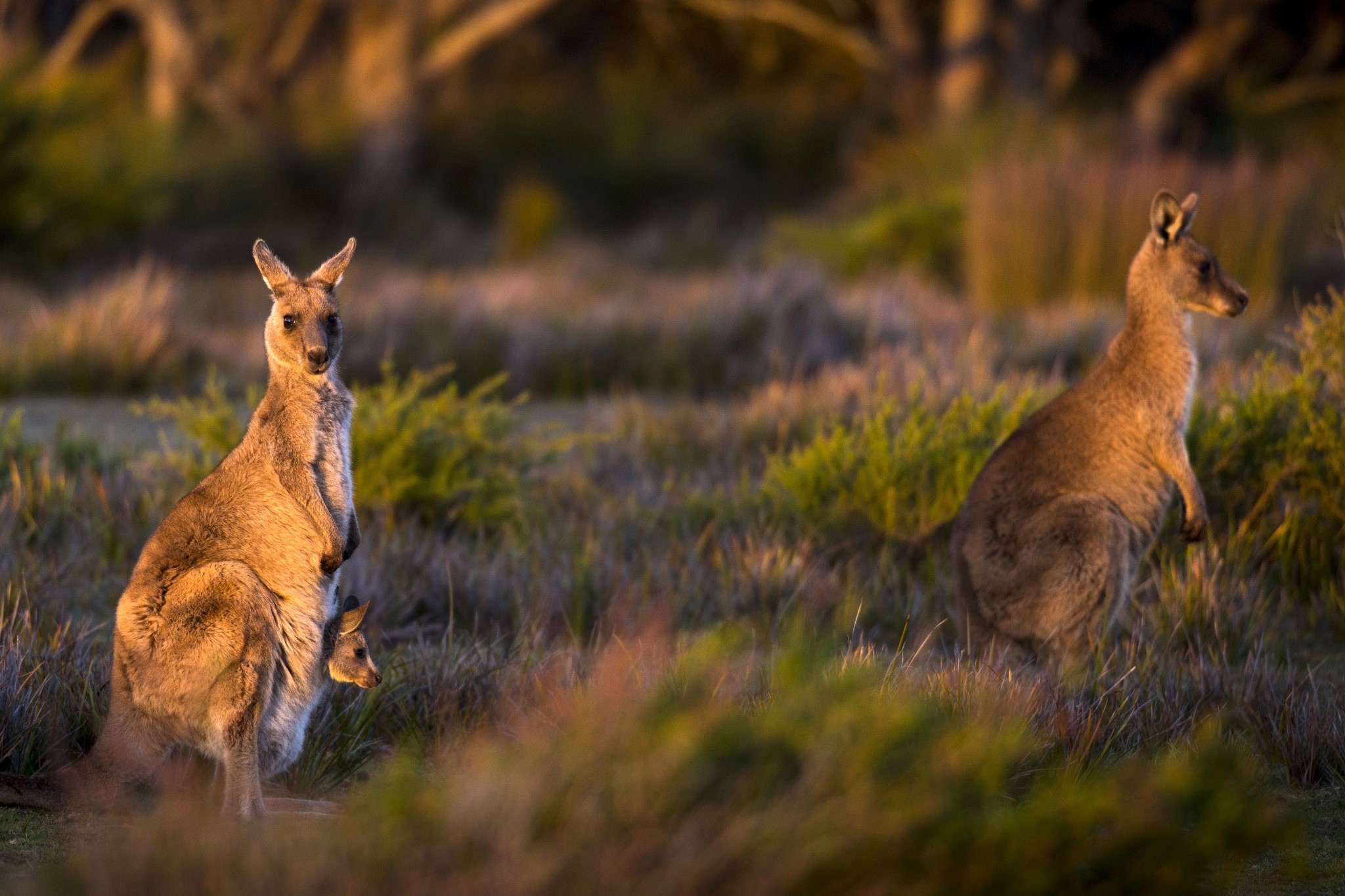
Forester Kangaroos, wukalina Walk, Tasmania/lutruwita © wukalina Walk
It’s an eight-kilometre walk on day one, along a track taking us from Mount William to the east coast of Tasmania. For the next three days we’ll clock up some 35 kilometres through forest, across rivers, along beaches and around sacred Indigenous sites. We’ll stay in architect-designed, eco-friendly accommodation, learn the culture of the palawa people, and eat some of the tastiest food ever cooked over a campfire. While most trekking days are long, and backpacks can get heavy, our group of trekkers – ranging in age from 30 to 70 – manage to complete all steps without a single blister. The hike on day one is arguably the most challenging – once we’ve summited the mountain, we drop back down into mossy ecotone laced with fishtail ferns before feeling the heat of a sun-scorched field of ancient Xanthorrhoea, their enormous stems shooting into the sky like floral totems. Thomas forages at the base of one and reveals small balls of red sap dropped by the plant, which she later melts over campfire coals and turns into an eye-popping lacquer to decorate clapsticks and didgeridoos.

krakani lumi camp, larapuna (Bay of Fires) © Rob Burnett
When we hear the waves hitting the shore, we know we’re close to our base for the next two nights. Sheltered in the dunes between Cod Bay and Cray River, the krakani lumi (“place of rest”) campsite looks like it has slipped off the pages of a glossy design magazine. Hobart-based architects Taylor + Hinds were given a brief to create spaces that were at once warm and welcoming, yet compact and inconspicuous; there was also a remit to ensure minimal environmental impact. To achieve this, the five sleeping pods and communal lodge imagined were built off-site and choppered in, and can be removed the same way without leaving a mark on the land.
They all come with charred blackwood exteriors (to help with fireproofing and mimic the patina of banksias that surround) and polished domed interiors, scented with the essential oil of melaleuca ericifolia – a flower that the palawa use to aid sleep. Connected by boardwalks, each of the buildings also comes with a bird hide, a nook at the back built specifically to shelter feathered friends. When we arrive, Thomas tells us the bird cubbyhouse in cabin three is currently occupied… by a family of possums.
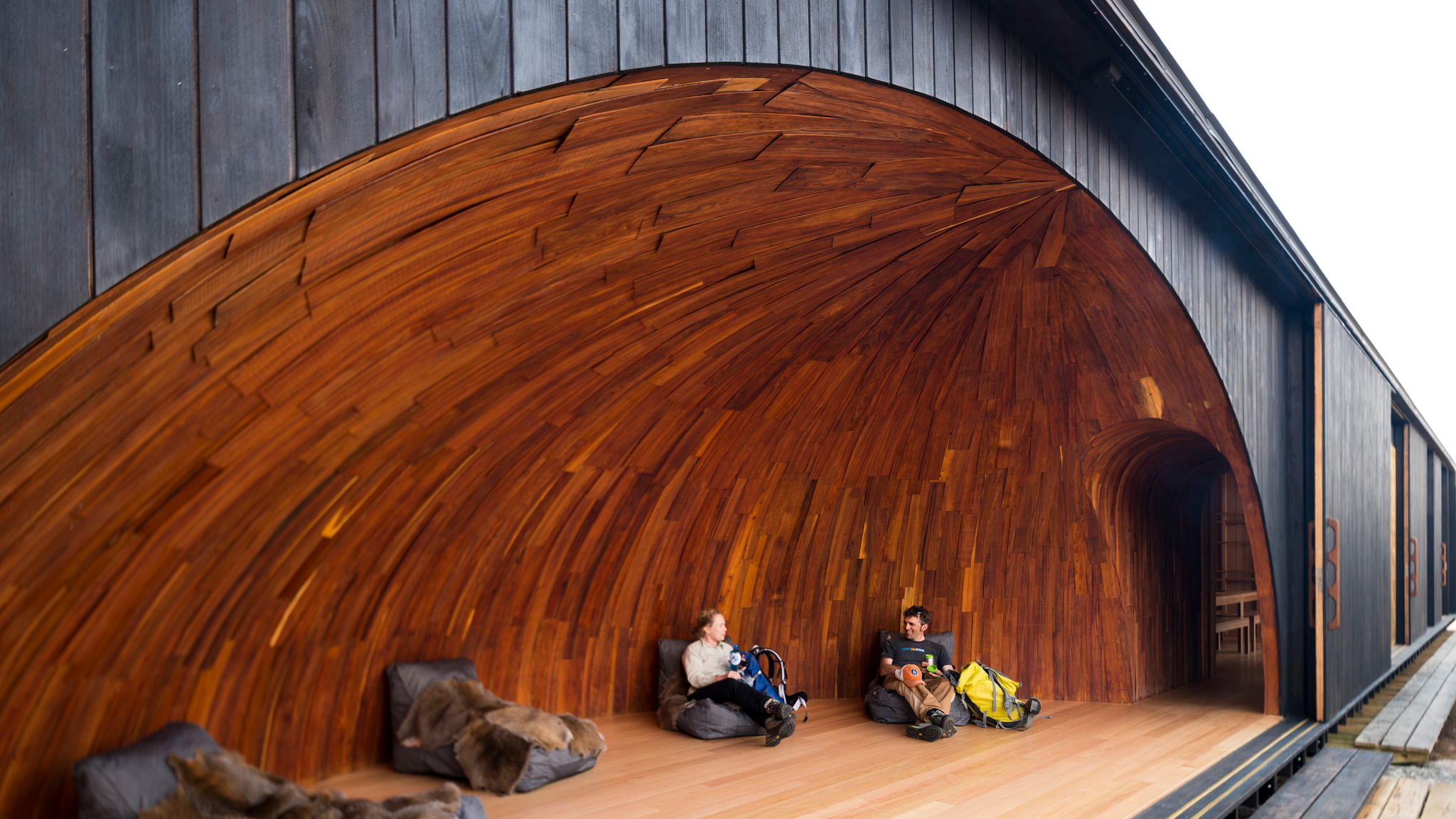
Communal area, wukalina Walk, Tasmania/lutruwita © The Wukalina Walk
It’s in the communal lodge where the architects’ deft hands at uniting style and sustainability really shines. Here, there are indulgent rain showers, high-tech composting toilets and a sun-drenched common dining room, filled with ceramics and curios collected on beach walks: shark eggs and seahorse skeletons among them. Despite the creature comforts, it’s all completely off-grid, using solar lighting and a small generator to heat water. Meals, meanwhile, are prepared over an open fire – think, scallops grilled in the half shell, loaves of damper, and roasted muttonbird, which proves an acquired taste. While Daniels prepares chocolate lava cake, cooked in the coals, I lie back on a wallaby throw and enjoy stellar Southern Hemisphere stargazing.

Sleeping pods, wukalina Walk, Tasmania/lutruwita © Tourism Australia
On day two we leave our hiking boots behind and stroll barefoot along Cod Bay, collecting shells and seaweed and picking saltbush that we later fry into delicious crisps to accompany sundowners – the native answer to peanuts on the bar counter. The northern coastline here is marked by a cascade of colourful rocks, covered in a rust-hued lichen and inky mussel shells. It’s also home to one of Tasmania’s largest and most important middens, an enormous expanse of blackened sand discoloured by centuries of decomposing scallop and oyster husks. This is where local palawa would feast, leaving behind piles of shells to show visitors what had been consumed and, as a result, what should be avoided. “Middens are like the earliest form of conservation,” says Thomas. “If there were scallop shells on the sand, the next mob would know not to touch them, so the population could regenerate, and they’d eat other seafood instead.” We stay on the sand on day three, but this time move south toward Eddystone Point and the Bay of Fires. We see our first person in 48 hours when we reach Deep Creek, which is, ironically, little more than a puddle when we arrive. Thomas hands out wraps and fruit, while Daniels boils a billy for bush tea and homemade salted caramel cookies.

Two people walking on a Bay of Fires beach during the wukalina Walk, TAS © The Wukalina Walk
From here, our route zigzags along the coast, sometimes taking us inland on overgrown wallaby trails, at other times hugging the water. I’m struck by the raw clarity of the sunlight, dancing over the shallow lagoon dappled with coral – it’s like someone has taken dirty glasses off my nose and polished them for the first time ever. Being surrounded by nature for three days, without screens and fluorescent lights, has given me space to pause, reminding me just how small I really am – in a good way. My feet should hurt from all the walking, but they don't. All I feel is calm and grounded, and immensely relaxed.

larapuna/Bay of Fires, Tasmania/lutruwita © wukalina Walk
Around 17 kilometres after leaving the day one and two sleep-stop of krakani lumi we arrive at Eddystone Point, known for its historic lighthouse that marks the beginning of the larapuna (Bay of Fires). While anyone can visit, only wukalina walkers and those with permission from the local Aboriginal community can sleep on the land here. We do just that in a renovated lighthouse keepers’ cottage, replete with plush double beds, a sunny library with games and nature tomes, and a well-stocked kitchen where the wine fridge doesn’t disappoint. Our final day is languid and lazy: coffee in bed, eggs Benedict in the sun on the porch, a heart-starting swim and a clamber up the lighthouse’s 100 or so stairs. From the top, larapuna stretches before us – it could easily have taken its name from the fiery orange lichen that lights up almost every granite headland along its 29-kilometre-long sweep of powder-white sand, although it was, in fact, named for the fires of the palawa, sighted by English navigator Tobias Furneaux in 1773. The light here is amazingly clear, giving the landscape an otherworldly quality that makes me believe postcards were invented just to show it off. And the sounds – the waves, the chatter of parrots, the wind running through coastal scrub – seem sharper, like they have an urgency to be heard. “It’s kind of like coming home, isn’t it?” says Thomas, gazing out to sea. “Sometimes, being here, my heart can’t help but skip a beat.”
